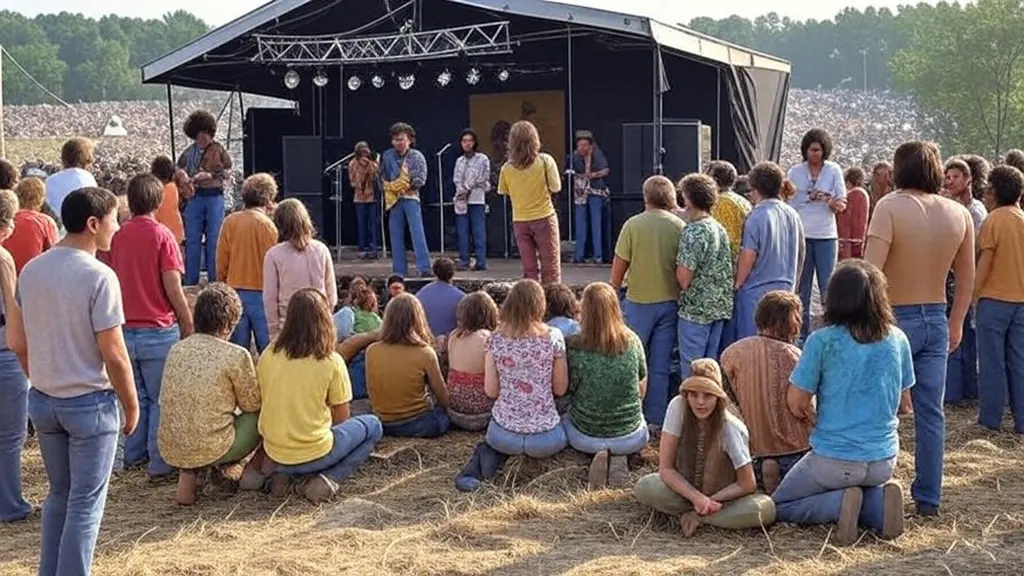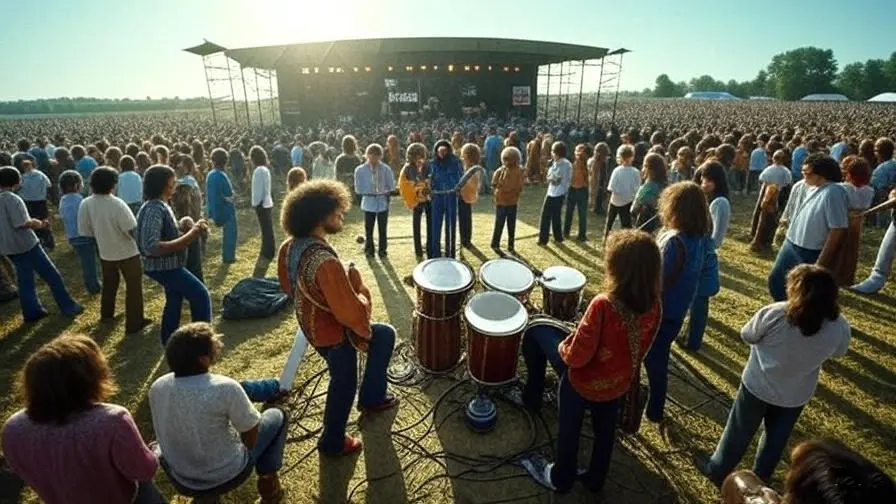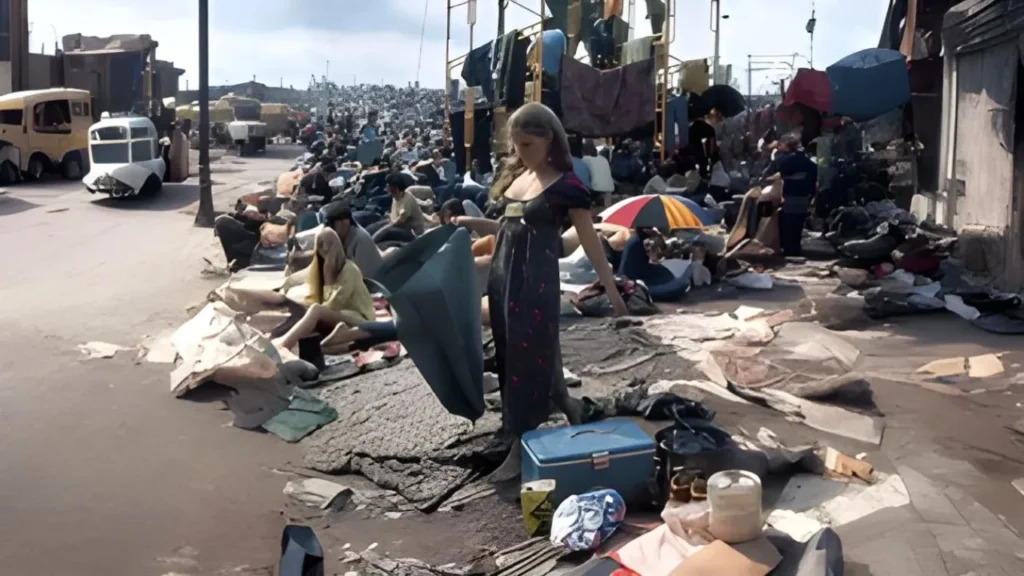Woodstock wasn’t perfect—it was muddy, chaotic, and grossly unplanned. But it became a living demonstration that when half a million strangers come together, wild things can happen. Not destruction—but unity, creativity, and lasting cultural resonance.
From August 15–18, 1969, nearly 500,000 people gathered on a dairy farm in Bethel, New York for “3 Days of Peace & Music.” Amid mud, monsters jams, and zero violence, Woodstock became legend.
And somehow… I ended up being one of them.
Quick Facts at a Glance
| Detail | Info |
|---|---|
| Dates | August 15–18, 1969 |
| Location | Max Yasgur’s farm, Bethel, NY |
| Attendance | ~460,000–500,000 |
| Tickets | $18 advance / $24 at gate |
| Acts | 32 performers, 163 musicians |
| Known For | Music, mud, peace, unity—no major violence |
Then, one night in a local bar, a girl I knew walked in and said she was driving to find our friends. “Wanna come?” she asked.
I was 16, living 50 miles away, working a summer job. Not a hippie, but not a square either.
I said yes.

We left around 9 PM, took back roads—and got stuck. We parked miles out and started walking.
We weren’t alone—people just kept joining the trail, like some kind of peaceful stampede. You couldn’t get lost. Just follow the flow.
By midnight, we heard the music echoing through the hills—soft, then louder and louder.
There we were—standing at the top of the hill, looking down at what seemed like an ocean of people.
About half a million souls—dancing, swaying, feeling the music together.
Drugs like mescaline and LSD were openly sold; pot was shared freely.
We walked into a crowd of 400,000 people… and somehow found our friends in the dark.
Cosmic, right? It felt like fate.
We joined them, passed around some of Eddie Stew’s homegrown, and let the moment wash over us.
At dawn, we wandered toward the camp. The scene was alive: naked hippies, Christmas lights strung in trees, signs like “Hippie Way,” and free kitchens run by communes like The Hog Farm.

It was people-watching paradise.
It was warm enough that I slept without blankets.
The next morning, we returned to our hill.
Then the rain came—big, heavy, soaking rain. But I don’t remember being cold or miserable.
I don’t even recall eating. There was no food. But I wasn’t hungry either.
Food ran out early, but volunteer kitchens and even helicopters brought in supplies.
Sunday afternoon came. We slipped away, covered in mud and carrying something I couldn’t name yet.
Favorite act? Sly and the Family Stone.
They played at 3:30 AM and lit up the place. Worth every second.
Woodstock didn’t change me overnight. But like a lot of people who were there, it left a mark.
A soft one. Quiet, but deep. The kind that sticks with you for life.


